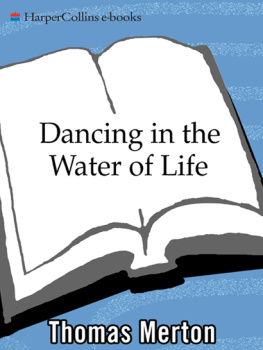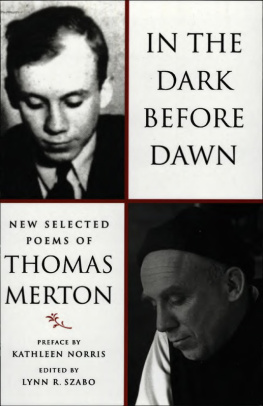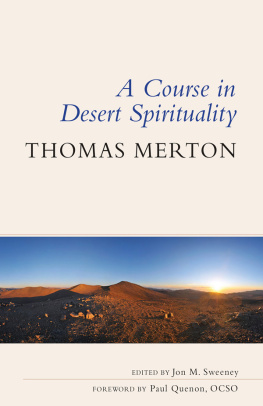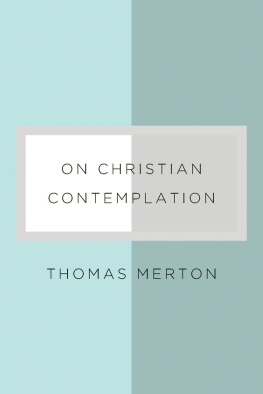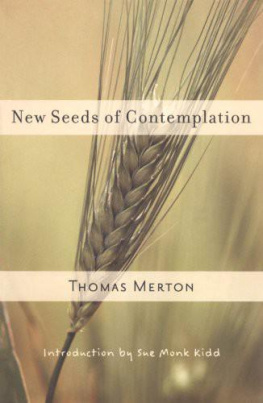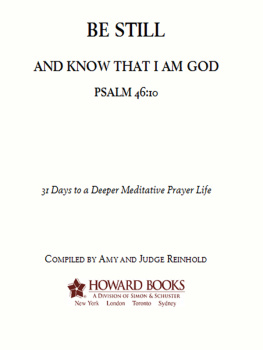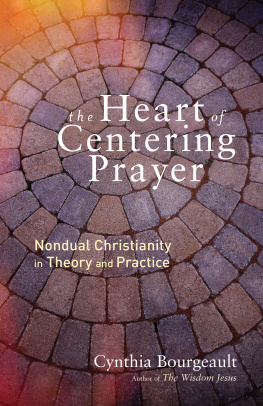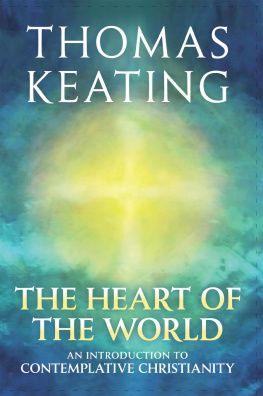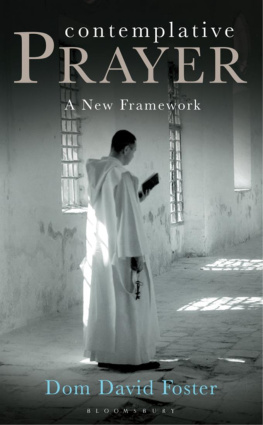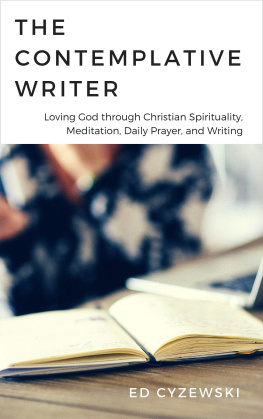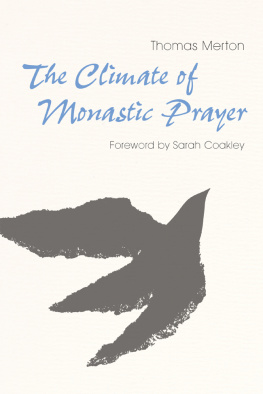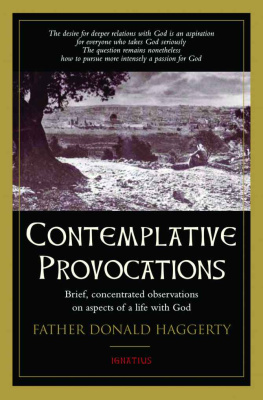Merton Thomas - Contemplative Prayer
Here you can read online Merton Thomas - Contemplative Prayer full text of the book (entire story) in english for free. Download pdf and epub, get meaning, cover and reviews about this ebook. City: New York, year: 2009;2014, publisher: The Crown Publishing Group;Image, genre: Religion. Description of the work, (preface) as well as reviews are available. Best literature library LitArk.com created for fans of good reading and offers a wide selection of genres:
Romance novel
Science fiction
Adventure
Detective
Science
History
Home and family
Prose
Art
Politics
Computer
Non-fiction
Religion
Business
Children
Humor
Choose a favorite category and find really read worthwhile books. Enjoy immersion in the world of imagination, feel the emotions of the characters or learn something new for yourself, make an fascinating discovery.

- Book:Contemplative Prayer
- Author:
- Publisher:The Crown Publishing Group;Image
- Genre:
- Year:2009;2014
- City:New York
- Rating:3 / 5
- Favourites:Add to favourites
- Your mark:
- 60
- 1
- 2
- 3
- 4
- 5
Contemplative Prayer: summary, description and annotation
We offer to read an annotation, description, summary or preface (depends on what the author of the book "Contemplative Prayer" wrote himself). If you haven't found the necessary information about the book — write in the comments, we will try to find it.
Contemplative Prayer — read online for free the complete book (whole text) full work
Below is the text of the book, divided by pages. System saving the place of the last page read, allows you to conveniently read the book "Contemplative Prayer" online for free, without having to search again every time where you left off. Put a bookmark, and you can go to the page where you finished reading at any time.
Font size:
Interval:
Bookmark:

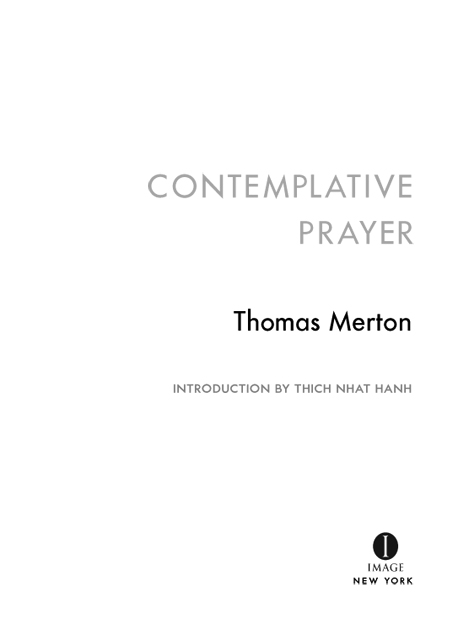
Copyright 1969 by The Merton Legacy Trust
Introduction copyright 1996 by Image Books, an imprint of the
Crown Publishing Group, a division of Random House LLC
Study guide copyright 2014 by Image Books, an imprint of the
Crown Publishing Group, a division of Random House LLC
All rights reserved.
Published in the United States by Image, an imprint of
the Crown Publishing Group, a division of Random House LLC,
a Penguin Random House Company, New York.
www.crownpublishing.com
IMAGE is a registered trademark and the I colophon is a trademark of
Random House LLC.
Originally published as Climate of Monastic Prayer and Contemplative Prayer by Cistercian Publications and Herder & Herder in 1969. First Image Books edition published in 1971. Subsequent Image Books edition published with new introduction in 1996.
This edition published by arrangement with Cistercian Publications.
Ecclesiastical approval to publish this book was received from Ignace Gillet, Abbot General of the Cistercian order, and Bernard Flanagan, Bishop of Worcester, October 30, 1968.
Library of Congress Cataloging-in-Publication Data is on file with the Library of Congress.
ISBN 978-0-385-09219-7
eBook ISBN 978-0-307-58953-8
2014 Image Edition
v3.0_r1
Louis Thomas Merton
19151968
I first met Thomas Merton in 1966. It is hard to describe his face in words, to write down exactly what he was like. He was filled with human warmth. Conversation with him was so easy. When we talked, I told him a few things, and he immediately understood the things I didnt tell him as well. He was open to everything, constantly asking questions and listening deeply. I told him about my life as a Buddhist novice in Vietnam, and he wanted to know more and more.
Our approach to prayer in Buddhism is a little different from that of Christianity. We practice silent meditation, and we try to practice mindfulness in everything we do, to awaken to what is going on inside us and all around us in each moment. The Buddha taught: If you are standing on one shore and want to cross over to the other shore, you have to use a boat or swim across. You cannot just pray, Oh, other shore, please come over here for me to step across! To a Buddhist, praying without also practicing is not real prayer.
In a real prayer, you ask only for the things you really need, things that are necessary for your well-being, such as peace, solidity, and freedomfreedom from anger, fear, and craving. Happiness and well-being are not possible without peace, solidity, and freedom. Most of our desires are not for our peace, solidity, and freedom. While you pray, you are deeply aware of what you really need and what is just the object of your desire. This kind of prayer is the light of God that shines upon you, telling you which way to go in order to obtain peace, solidity, and freedom. In a real prayer, you also touch the wholesome seeds in your consciousness and water them. These are seeds of compassion, love, understanding, forgiveness, and joy. If while praying you can recognize these seeds in you and help them grow, your prayer is already a deep practice. Following, for instance, is a Buddhist prayer for love that is practiced by all schools of Buddhism. Our Christian brothers and sisters know that God is love. This prayer is a practice to help us touch love and bring it into our daily life:
May I be peaceful, happy, and light in body and spirit. May he/she be peaceful, happy, and light in body and spirit.
May they be peaceful, happy, and light in body and spirit.
May I be free from injury. May I live in safety.
May he/she be free from injury. May he/she live in safety.
May they be free from injury. May they live in safety.
May I be free from disturbance, fear, anxiety, and worry.
May he/she be free from disturbance, fear, anxiety, and worry.
May they be free from disturbance, fear, anxiety, and worry.
May I learn to look at myself with the eyes of understanding and love.
May he/she learn to look at him/herself with the eyes of understanding and love.
May they learn to look at themselves with the eyes of understanding and love.
May I be able to recognize and touch the seeds of joy and happiness in myself.
May he/she be able to recognize and touch the seeds of joy and happiness in him/herself.
May they be able to recognize and touch the seeds of joy and happiness in themselves.
May I learn to identify and see the sources of anger, craving, and delusion in myself.
May he/she learn to identify and see the sources of anger, craving, and delusion in him/herself.
May they learn to identify and see the sources of anger, craving, and delusion in themselves.
May I know how to nourish the seeds of joy in myself every day.
May he/she know how to nourish the seeds of joy in him/herself every day.
May they know how to nourish the seeds of joy in themselves every day.
May I be able to live fresh, solid, and free.
May he/she be able to live fresh, solid, and free.
May they be able to live fresh, solid, and free.
May I be free from attachment and aversion, but not be indifferent.
May he/she be free from attachment and aversion, but not be indifferent.
May they be free from attachment and aversion, but not be indifferent.

This kind of prayer is also contemplation, meditation, and practice. It generates spirituality in every moment of our daily life.
In this wonderful book, Contemplative Prayer, Thomas Merton shares with us his own deep and nondualistic understanding of prayer and meditation. Like their Buddhist counterparts, many Christian practitioners refrain from excessive analytical scrutiny of the Scriptures. The Desert Father St. Macarius said, It is not necessary to use many words. Only stretch out your arms and say, Lord, have pity on me as you desire and as you well know how. And if the enemy presses you hard, say, Lord, come to my aid. Other early Christian monks also urged people to use short, simple prayers drawn from the Psalms. The most frequently used was O God, come to my aid (Deus in adjutorium meum intende).
Christians also practice calling the holy name of Jesus Christ. St. Macarius said, There is no other perfect meditation than the saving and blessed name of our Lord Jesus Christ dwelling without interruption in you. This practice is called interior recollection, abandoning distracting thoughts and humbly invoking the name of Jesus with all your heart. Merton writes, This simple practice is considered to be of crucial importance in the monastic prayer of the Eastern Church, since the sacramental power of the name of Jesus is believed to bring the Holy Spirit into the heart of the praying monk.
For monks of old, the secret of success in the practice was to keep the name of Jesus always in mind. The name of Jesus brings the energy of God, namely the Holy Spirit, into your own being. When the monk was able to do this, he could live his daily life in the presence of God. Buddhists in the Pure Land tradition practice similarly. They know that what is most essential is to maintain true concentration while reciting the name of Buddha, just as Christians know that they have to practice with their hearts and not call the Lords name in vain. Christian meditators do also take scripture as their subject,
Font size:
Interval:
Bookmark:
Similar books «Contemplative Prayer»
Look at similar books to Contemplative Prayer. We have selected literature similar in name and meaning in the hope of providing readers with more options to find new, interesting, not yet read works.
Discussion, reviews of the book Contemplative Prayer and just readers' own opinions. Leave your comments, write what you think about the work, its meaning or the main characters. Specify what exactly you liked and what you didn't like, and why you think so.

